The Gibb Memorial Trust
The Gibb Memorial Trust was founded in 1902 in memory of Elias John Wilkinson Gibb, by his mother Jane Gibb. She wished to commemorate the untimely death of her son, a mainly self-taught scholar devoted to researching the history, literature, philosophy and religion of the Turks, Persians and Arabs. Gibb’s particular interest was the poetry of Ottoman Turkey, and he published Ottoman Poems Translated into English Verse in the Original Forms in 1882 before commencing to work on a six volume History of Ottoman Poetry. Only one of these volumes was published in his lifetime with the remaining five volumes edited and brought to publication by Gibb’s friend, Edward G. Browne, who was himself a British Orientalist and Sir Thomas Adams’s Professor of Arabic at the University of Cambridge.
The aims of the Trust were to finance the Gibb Memorial Series, a series of publications, mainly, but not exclusively, dedicated to editions and translations of Arabic, Persian, and Turkish texts. The original trustees were Mrs. Gibb herself, Edward G. Browne, Guy Le Strange, Henry F. Amedroz, Alexander G. Ellis, Reynold A. Nicholson, and E. Denison Ross, with Mrs. Ida W. E. Ogilvy Gregory, E. J. W. Gibb’s widow, later replacing Mrs. Gibb. Subsequent trustees have included Charles A. Storey, Hamilton A. R. Gibb, Reuben Levy, and Arthur J. Arberry. The Trust is still active and details of current publications and scholarships can be found on its website. One of its current trustees is Professor Carole Hillenbrand, joint winner of the Royal Asiatic Society Gold Medal for 2019 with her husband Professor Robert Hillenbrand. Unfortunately, the award of the Medal was scheduled to take place this month on the 19th April, and sadly had to be postponed.
In our archive collections are a box of papers for the Gibb Memorial Trust. Over the last few weeks, I’ve been sorting and organising these, and their catalogue is now available on Archives Hub. These papers appear to have come to the Society with the large bequest from Charles Ambrose Storey, as the majority are correspondence to and from Storey in the course of his business as a trustee of the Trust. They span from 1907-1951 but the majority are from the 1920s to 1940s.
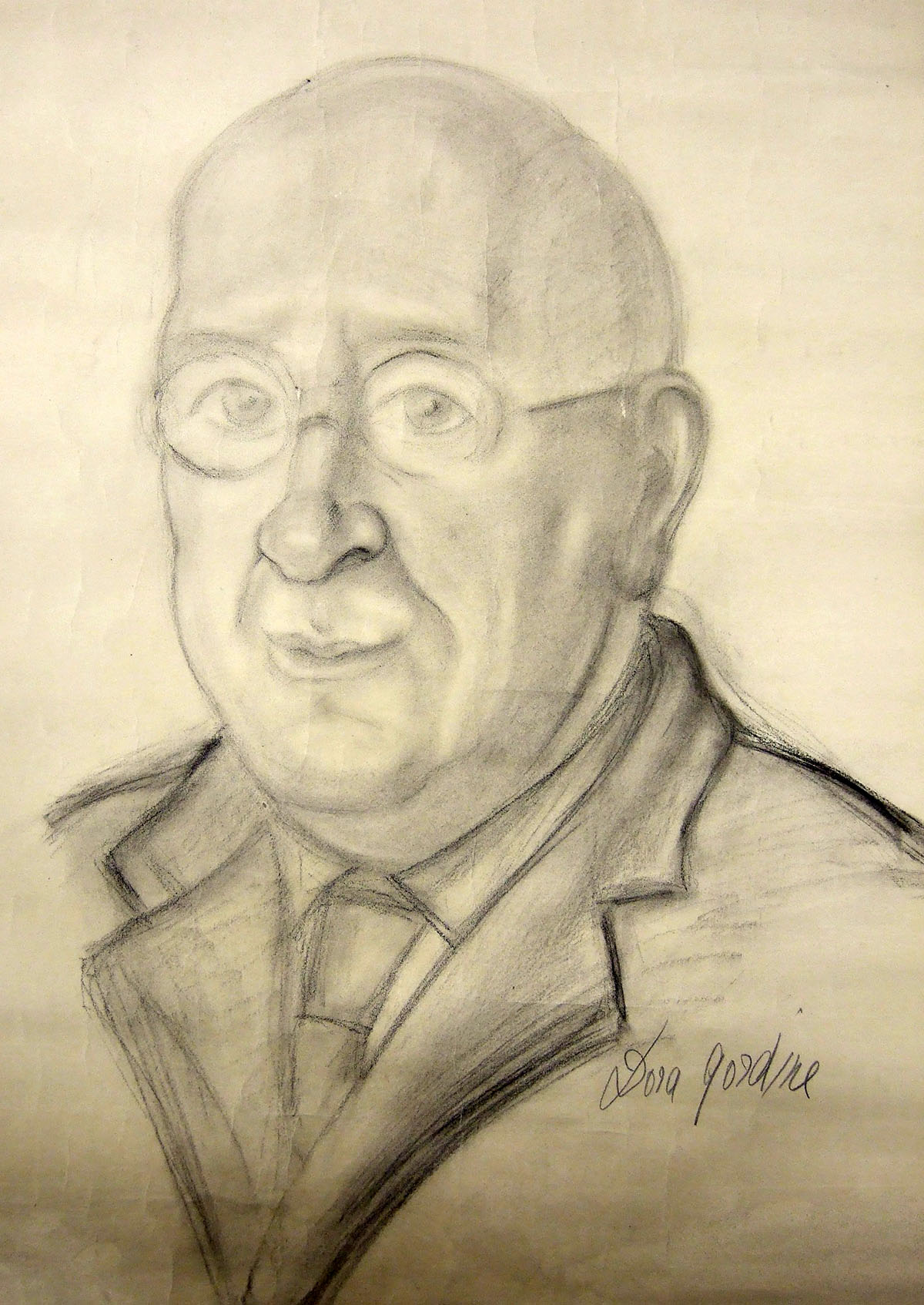
Of particular interest within these papers are the record of the Trust’s activities during World War II. Some of the trustees were no longer in the country, trustees meetings were suspended, and there were considerable difficulties getting books published and bound. The trustees, at that time headed by Reynold Alleyne Nicholson, set up a system of sending round items for discussion in lieu of meetings, in much the same way that our Society is currently coping with cessation of meetings due to the pandemic. Nicholson, a renowned Rumi scholar, was based in Towyn, North Wales. He had been unable to return to Cambridge as could not find any rooms to rent in the town. Storey, however, was still in Cambridge and much of the practical work of the trustees seemed to fall on him.
The Trust used the solicitors, W.L and E.G. Raynes, to carry out their administrative business. Father and son, working from Cambridge, E.G. Raynes, it seems, was being groomed to take over his father’s business. However when WWII broke out, E.G. Raynes disappeared from the office, presumably to serve in the armed forces and his father took up all the reins again. I’m pleased to report that E.G. Raynes made it back to resume his position as the note on this letter of the 3rd January 1946 informs:
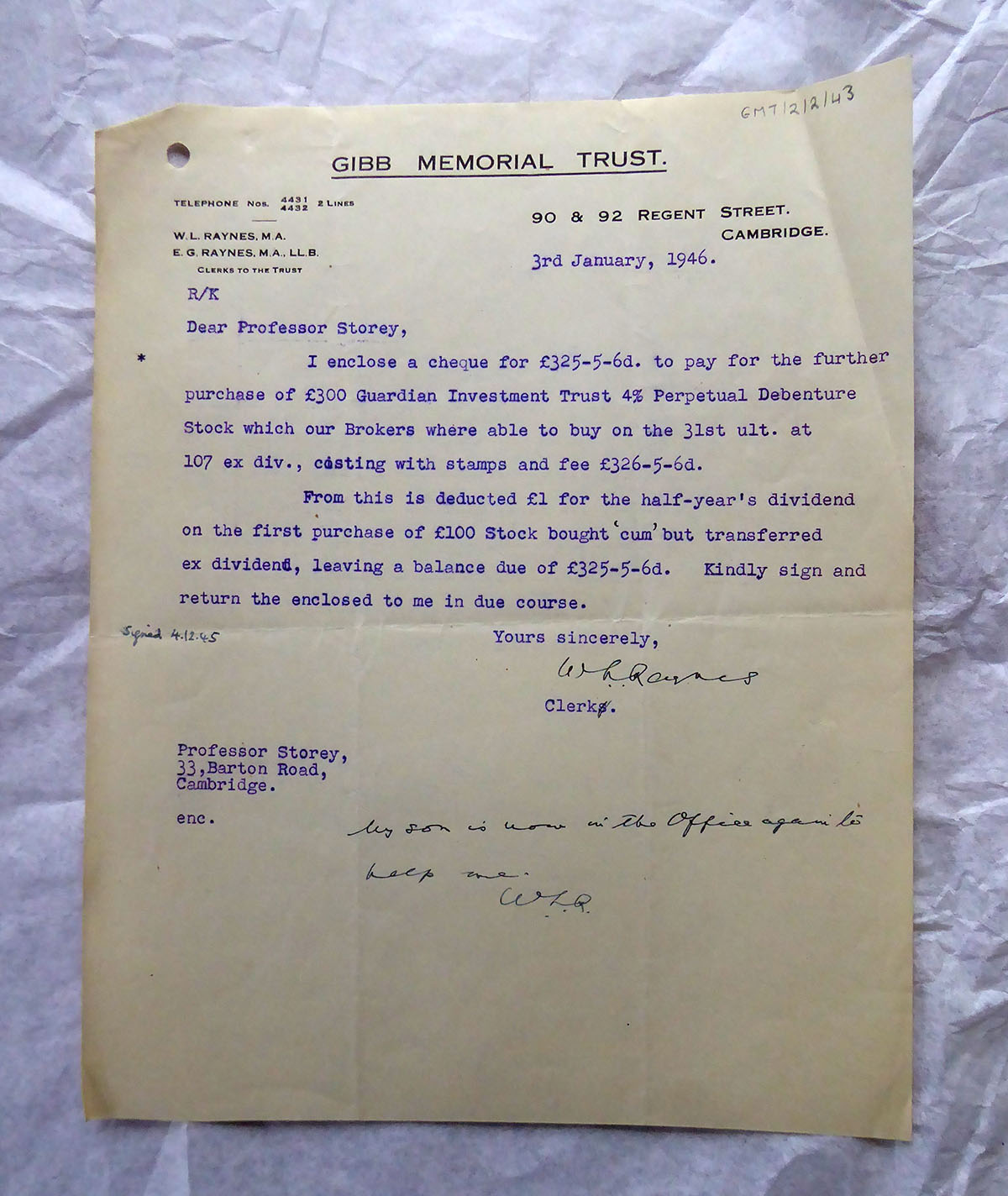
We have a complete set of the Minutes for the Annual Meeting of the Trustees from 1932 to 1940, when these meetings were suspended. They give an interesting insight into those who served on the Board and the manuscripts they were looking to publish.
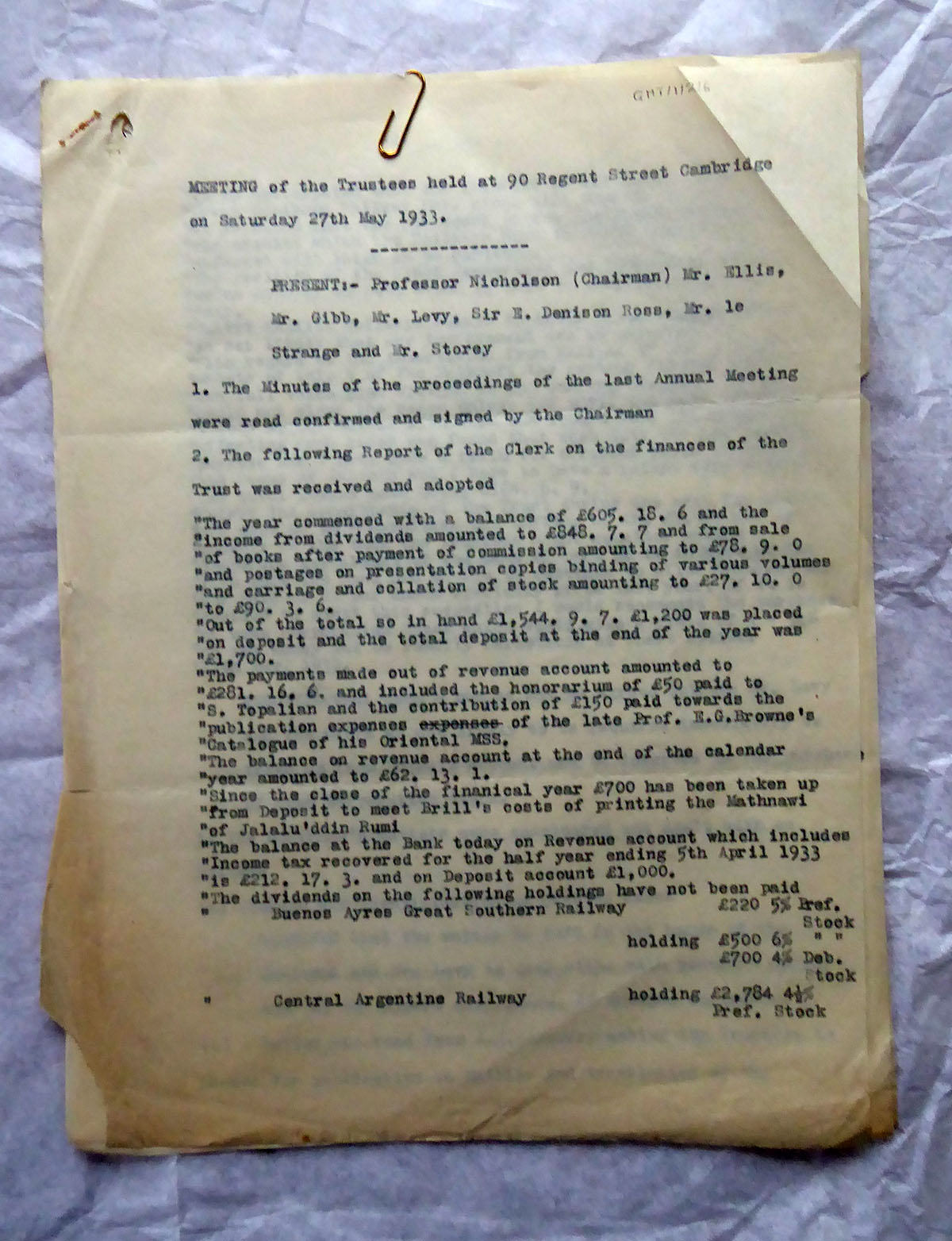
During the War years, the Trust undertook a publication of Vladimir Minorsky’s translation of Tadhkirat al-Mulūk: A Manual of Ṣafavid Administration (GMS, N.S. 16, 1943). There is considerable correspondence between Minorsky and Storey as the overseeing trustee and also with the publishers and binders as they try to source paper and boards for publication and find time to undertake the work. It seems that the government requisitioned the buildings of the publishers Dow and Lester in Luton, and the Trust stock was rehoused in the boathouses at Newnham, Cambridge and into the care of the University Press. Some of you local to the area, may well be able to picture where that is.
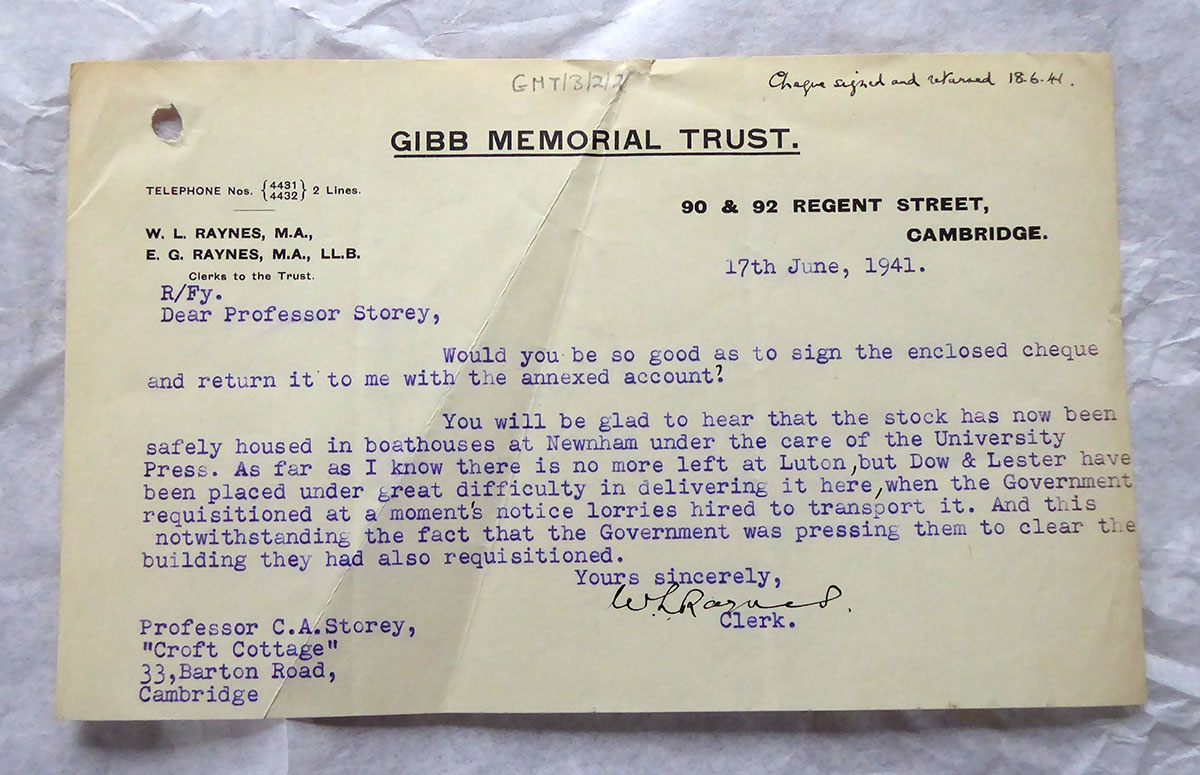
Work transferred to W. Heffer & Sons Ltd. but they faced shortages of material which were needed for government publications and, it seems, were often required to print government publications at short notice. The Gibb Memorial Series, at this time, were published with elaborate bindings embossed with gold lettering. Correspondence covers finding where the spine brasses for the lettering have been left and which need to be newly cut. For other volumes that the Trust wanted binding, they also experienced delays because of the shortage of skilled binders due to the need for experienced women workers who have no special reservation on the ‘Pay-as-you-earn’ Income Tax schedule from H.M. Stationery Office.
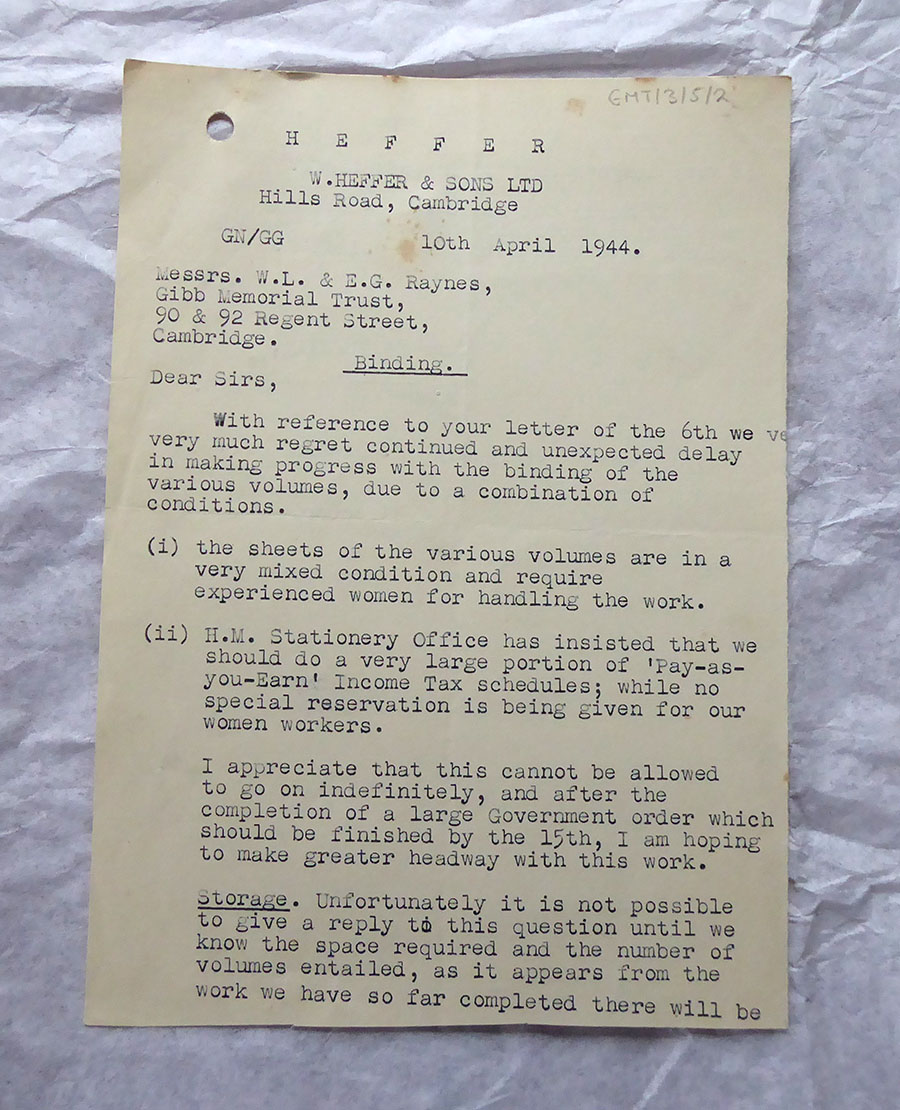
Altogether these Papers provide an interesting insight into the Trust’s life and could well provide material for a paper when the Reading Room is open again and researchers can come to see them. I am glad that I had the opportunity to get the material sorted and catalogued despite our ongoing difficulties, so that others may know of their existence. I also want to thank both the Gibb Memorial Trust and the Encyclopaedia Iranica, whose websites helped with both the cataloguing and the preparation of this blog post.
~ ~ ~ ~ ~ ~
In other news, this week, I’ve been trying to kickstart our Instagram account and begin to get more images up. So, if you are on Instagram, please follow us ‘royalasiaticsociety’ and help me learn how to use this social media to spread the news of our wonderful collections.
